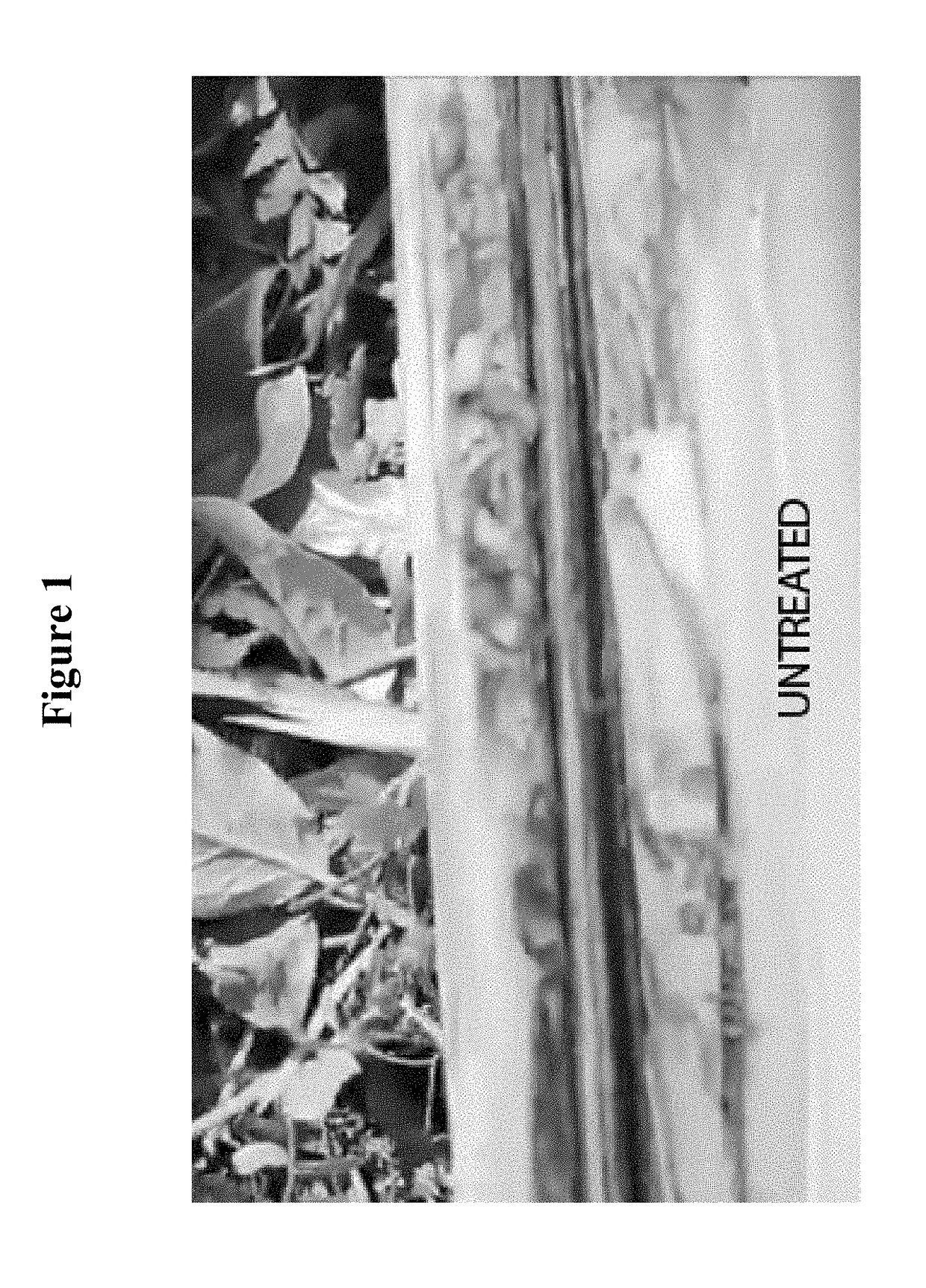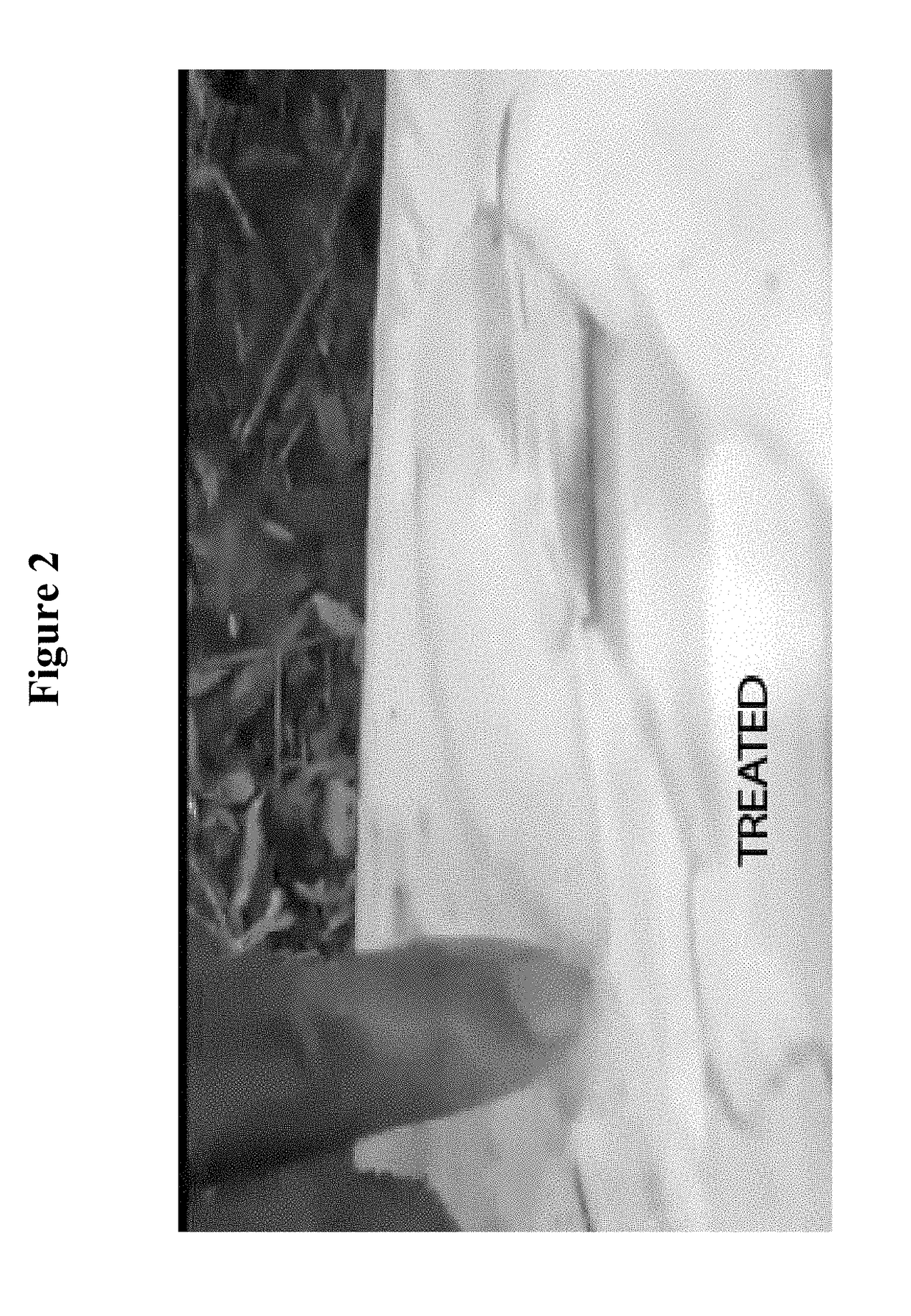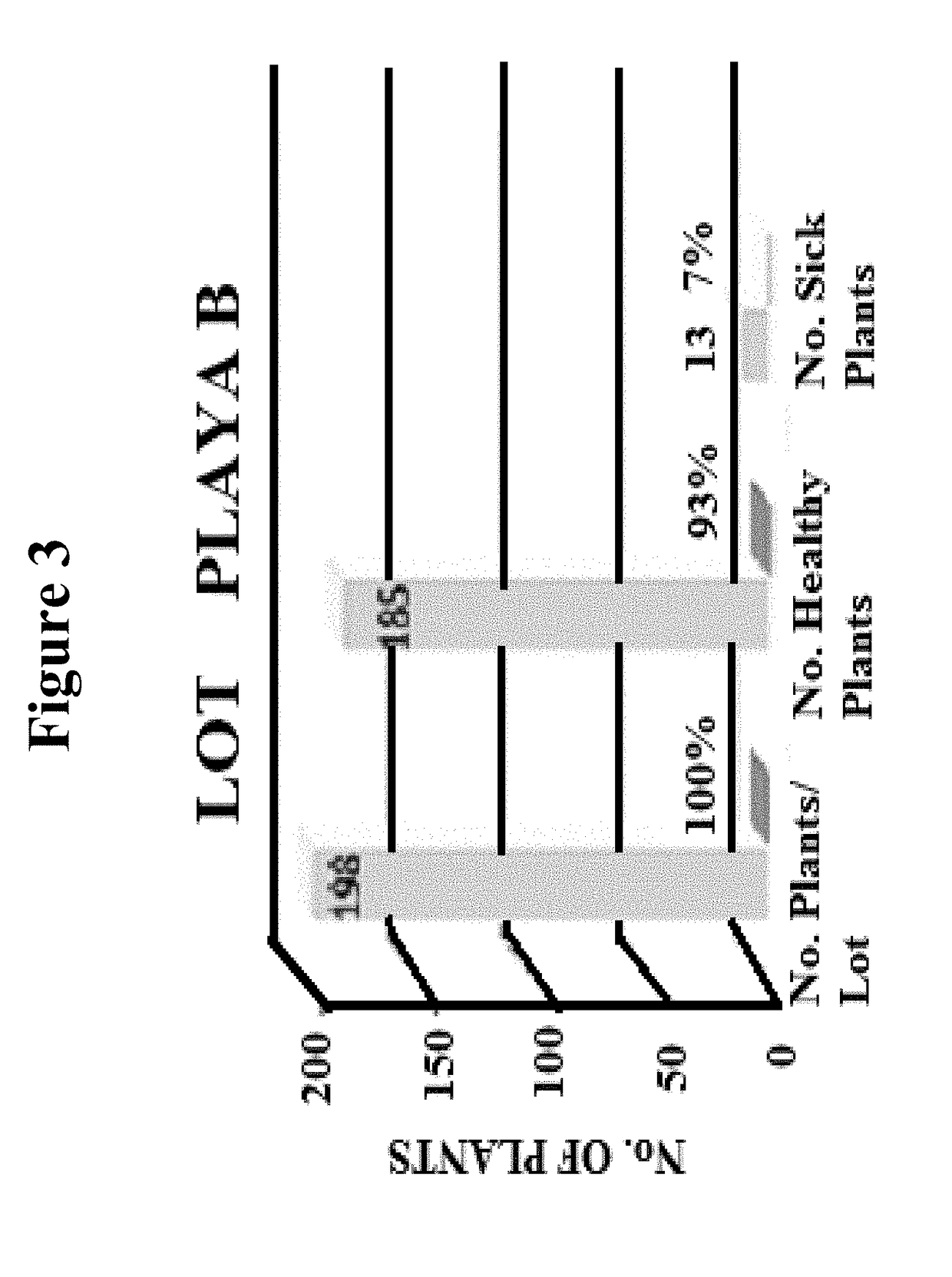Bio-derived compositions for use in agricultural and environmental remediation
a technology of bio-derived compositions and agricultural and environmental remediation, applied in the direction of biocide, animal husbandry, botany apparatus and processes, etc., can solve the problems of increasing the recognition of high-input agriculture as degrading the environment, and reducing the ability of farmers to grow food in many areas. , to achieve the effect of promoting plant growth, soil health and bio-controlling
- Summary
- Abstract
- Description
- Claims
- Application Information
AI Technical Summary
Benefits of technology
Problems solved by technology
Method used
Image
Examples
example 1
[0172]A product having the composition as shown in Table 2 below is made by the method shown below.
[0173]
TABLE 2Percent byAmountIngredientsWt (%)(Kg)1. Green Peas2.51.52. Red beans2.51.53. Yellow corn2.51.54. Sorghum2.51.55. Yellow pine sawdust5.03.06. Pine Oil1.00.67. Non-iodized sea salt0.50.3Potable Water68.4541.07INOCULUMYeast Saccharomyces0.050.03Bacillus subtillis spores10.06.0Bacillus aglomerans spores2.51.5Bacillus megaterium spores2.51.5Total100%60Kg
Manufacturing Process for the Composition of Table 2
[0174]1. Take each of the ingredients 1 to 7 in the amounts referenced in table 2 and mix them in the same order in which they appear with 41.07 Kg of potable Water.
[0175]2. Heat the mixture from the previous step to a boil.
[0176]3. Allow the mixture to cool to room temperature.
[0177]4. Take a 500 ml sample from the top of the mixture obtained in step (3) above, and check to make sure that the sample does not contain any solid.
[0178]5. Add 0.03 kg (30.0 g) of yeast Saccharomyce...
example 2
[0191]Using the procedure of Example 1, the following product as shown in Table 3 is made.
[0192]
TABLE 3Percent byAmountIngredientsWt (%)(Kg)Green Peas16.59.9Potable Water68.4541.07INOCULUMYeast Saccharomyces0.050.03Bacillus subtillis spores10.06.0Bacillus aglomerans spores2.51.5Bacillus megaterium spores2.51.5Total100%60Kg
example 2a
[0193]Using the procedure of Example 1, the following product as shown in Table 3a is made.
[0194]
TABLE 3aPercent byAmountIngredientsWt (%)(Kg)Red beans16.59.9Potable Water68.4541.07INOCULUMYeast Saccharomyces0.050.03Bacillus subtillis spores10.06.0Bacillus aglomerans spores2.51.5Bacillus megaterium spores2.51.5Total100%60Kg
PUM
 Login to View More
Login to View More Abstract
Description
Claims
Application Information
 Login to View More
Login to View More - R&D
- Intellectual Property
- Life Sciences
- Materials
- Tech Scout
- Unparalleled Data Quality
- Higher Quality Content
- 60% Fewer Hallucinations
Browse by: Latest US Patents, China's latest patents, Technical Efficacy Thesaurus, Application Domain, Technology Topic, Popular Technical Reports.
© 2025 PatSnap. All rights reserved.Legal|Privacy policy|Modern Slavery Act Transparency Statement|Sitemap|About US| Contact US: help@patsnap.com



